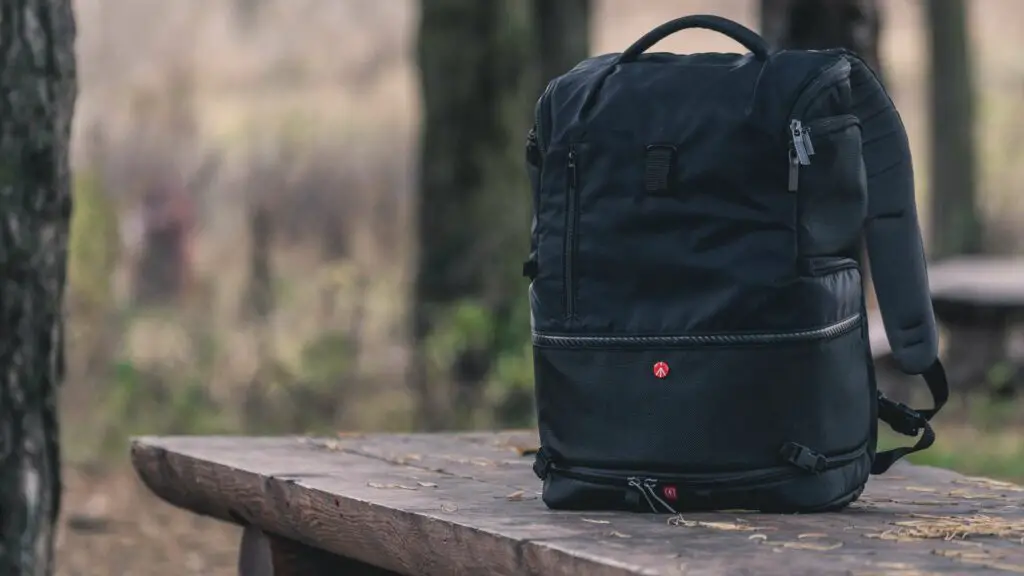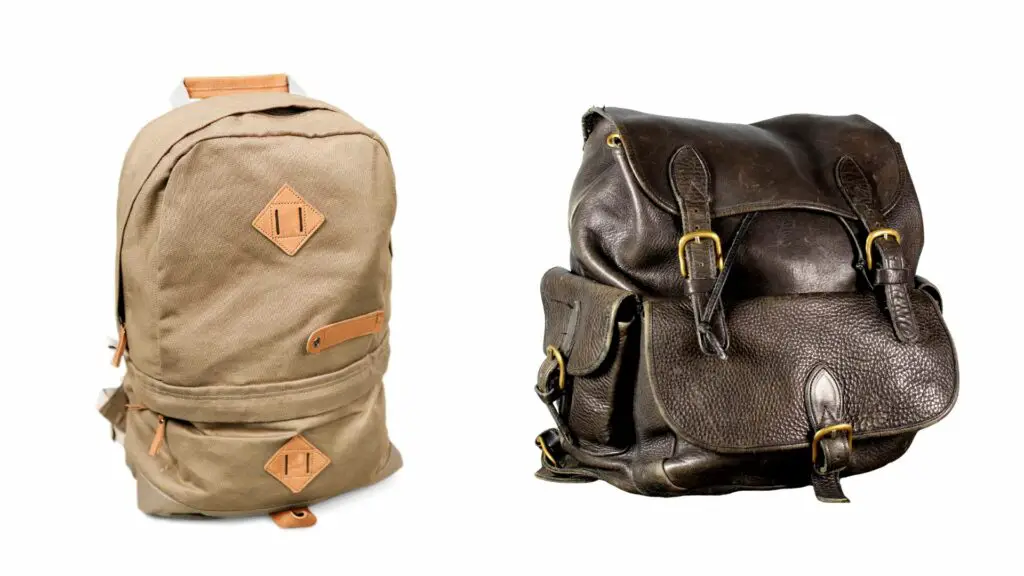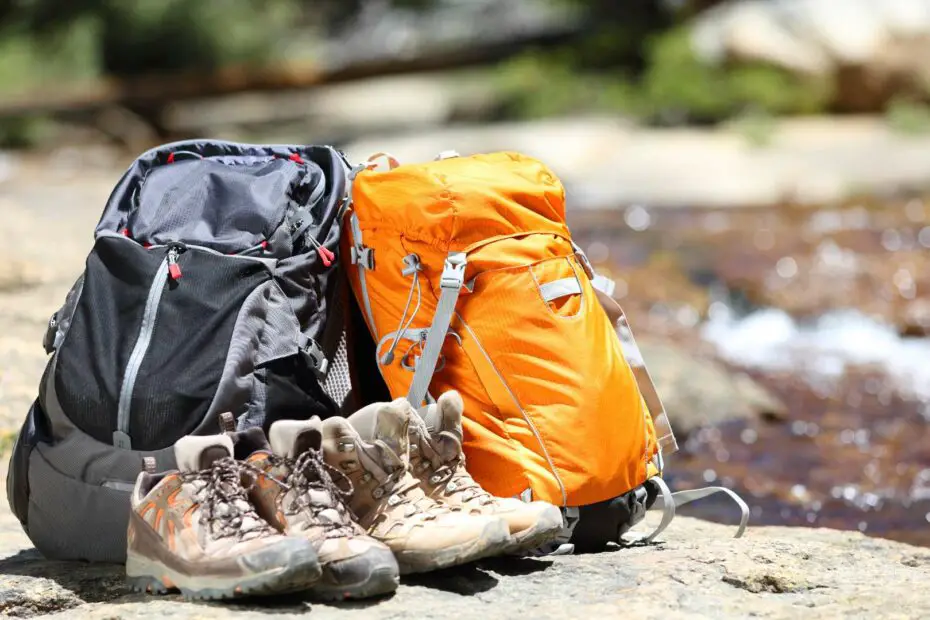When looking for a backpack, the first thing you need to consider is the material it’s made from. With so many materials available on the market, such as nylon, cotton, canvas, leather (and many more), it can be hard to know which one offers the best durability and protection. Making sure your bag can stand up to everyday wear and tear all comes down to the material that went into it. So, what’s the toughest backpack material?
Nylon is usually considered to be the most durable backpack material. It’s lightweight, waterproof, and able to withstand excessive wear and tear without getting damaged. That’s why almost every hiking/camping backpack is made out of some type of Nylon blend. Just understand that every manufacturer has its own unique Nylon blend. A $15 budget nylon backpack won’t have the same durability as a $100+ pack.
With that being said there are lots of other materials that can withstand typical wear and tear. Leather, canvas, or cotton bag may not be as durable as high tech nylon blends, but it’s durable enough for the vast majority of consumers.
The Toughest Backpack Materials
Most backpacks are made out of canvas, cotton, or nylon (or a blend of all 3). There are a few other options like leather and synthetic blends, but those are usually found in designer/fashion backpacks. Here’s a list of the most common materials found in backpacks. You may want to check out my backpack materials guide that goes over each of these options in detail.
- Nylon
- Polyester
- Polypropylene
- Canvas
- Leather
- Denim
- Cotton
- PVC
- Specialty Fabrics (Usually Have A Nylon Base): Ripstop, Cordura, Kodra, Ballistic Nylon
If you’re looking for an extremely durable backpack I recommend looking for some kind of Nylon blend. Every manufacturer uses their own terminology, but they’re usually labeled as RipStop, Cordura, Kodra, or Ballistic Nylon etc.
The vast majority of these products use a nylon base paired with other synthetic fibers. You get all the advantages of using nylon with the added durability of other materials. This usually gives added puncture or slash protection, above what you’d get with consumer grade nylon.
Why Should I Choose A Nylon Backpack?

Advantages:
- Extremely Durable
- Waterproof
- Lightweight
- Tear Resistant
Disadvantages:
- Expensive
- Less Fashionable
- Stains Easily
Nylon is by far the most popular backpack material on the market. Almost ever hiking backpack and most school/business backpacks use some type of nylon blend. A nylon pack is actually made out of a broad range of plastics that are melted down into Nylon Fibers. Those fibers are then woven into into durable threads that are used to make backpacks.
Nylon is one of the easiest threads to melt down and weave, making nylon packs cheaper than most of the other materials on this list. Don’t get me wrong, being cheap doesn’t mean nylon isn’t an excellent backpack material. It’s surprisingly strong, durable, abrasion resistant, water-resistant, and can handle extreme temperatures.
There is one small weakness to Nylon packs. They’re less UV resistant than other synthetic materials, which isn’t a huge deal. The pack will still hold up under direct sunlight, but it will eventually fade over time.
Nylon Holds Up To The Elements
Where nylon really shines is its resistance to the elements. Water damage is the number 1 cause of issues when it comes to other backpack materials. It will quickly cause rot, mold/mildew, and general decay.
While I don’t recommend soaking a nylon backpack and tossing it straight into storage (recipe for mold/mildew), it’s naturally water resistant and can withstand getting soaked for long periods of time. There’s very little risk of decay by keeping a nylon bag in storage or getting your pack wet.
Just make sure you hang your backpack up to dry before putting it into storage. Water usually won’t ruin a nylon backpack, but storing a backpack wet will lead to mold and mildew issues. If your backpack gets moldy, you’ll have to soak it in an enzymatic cleaner (my favorite).
What About Canvas and Leather?

When most people think about tough backpacks, nylon probably isn’t the first thing that pops into your mind. Most people think of the old school canvas rucksacks they use in the military and heavy duty leather bags.
My dad’s been using his old military style canvas rucksack that he got in Vietnam. He’s had that same bag for 50+ years and it’s still holding strong. You could probably take a knife to that thing and it wouldn’t rip.
Leather is another durable option that can withstand almost anything life can throw at it. I’ve been using a leather backpack for my photography gear since I started the hobby as a teenager. A high quality leather bag will last decades if you treat it right.
Canvas and leather easily win out (over nylon) when comparing rip and puncture resistance. Anybody that uses a sewing machine will tell you how hard it is to puncture canvas and leather. You need a sharp metal blade to cut through canvas or leather. Nylon is slash resistant and can stand up to 99% of situations, but it’s in a completely different league compared to canvas/leather.
Canvas and Leather Are Susceptible to Moisture and Decay

So why isn’t canvas/leather the clear leader when it comes to durability? It all comes down to water damage and maintenance issues. Water will quickly damage a canvas or leather pack.
Canvas is notorious for holding water. It takes a long time for canvas to dry after getting completely saturated. That’s a huge issue when you need to put your pack into long term storage. All it takes is a little bit of moisture in the bag to get mold and mildew damage.
Leather is better at resisting water, but there are a few maintenance issues you need to consider. You need to maintain the bag to keep it from drying out and rotting away. That’s not a huge issue in the short term, but you’ll need to condition your leather backpack to make it last.




